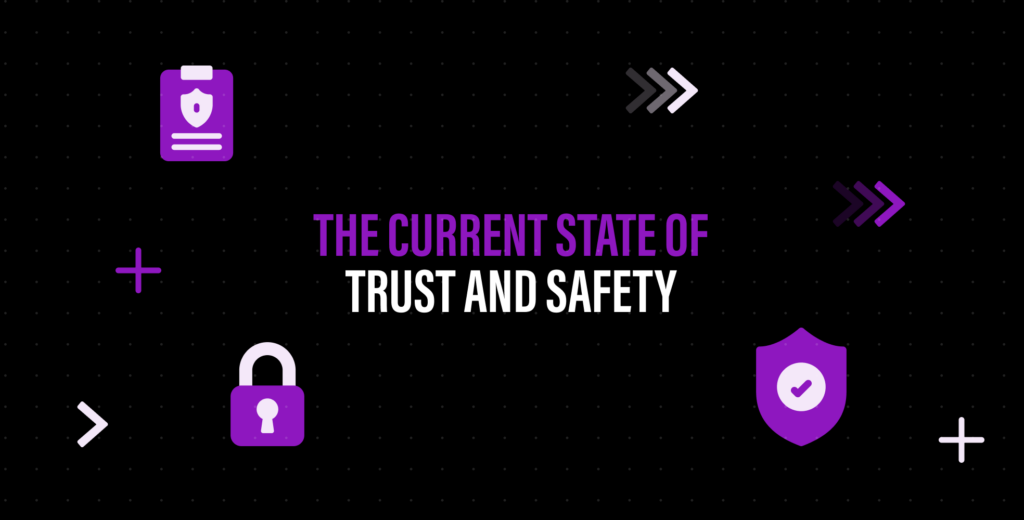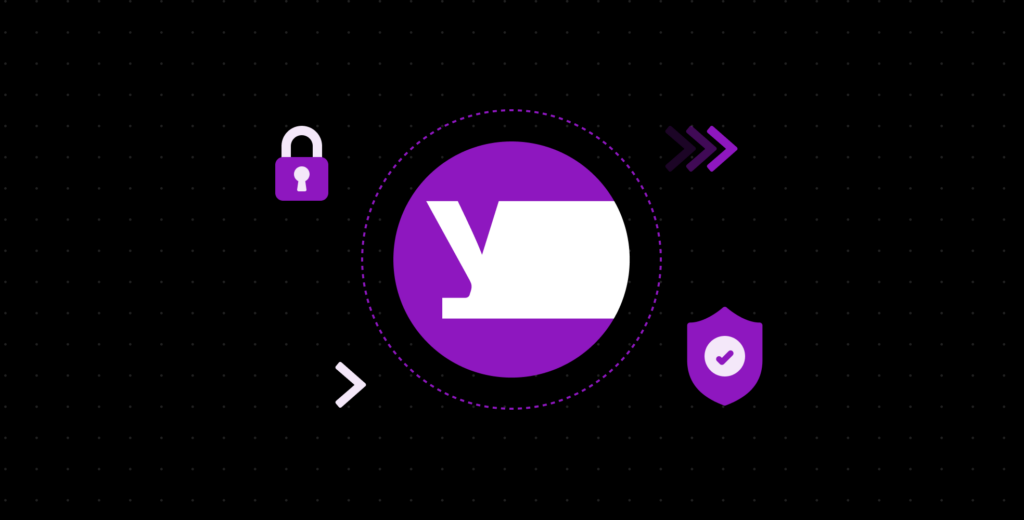Once upon a time, a small online retailer decided to change the way we buy books. This company, called Amazon, took on the behemoth of brick-and-mortar bookselling and transformed the retail landscape. It didn’t stop at books, but expanded to offer everything under the sun, and is now the largest e-commerce platform in the world.
Amazon shattered the norms of retail and showed us a new way of buying things we never knew we needed.
Much like Amazon, Netflix revolutionized the way we consume media. Video stores dominated the video rental industry, and Netflix came along with its DVD-by-mail model. At first, it seemed like a curious novelty. But as the internet grew and streaming technology advanced, Netflix pivoted to an online streaming platform, taking the world by storm.
We didn’t realize there was a better way to watch movies and TV shows… until we did. Industries can be shaken to their core by companies that dare to challenge the status quo.
It’s time for Trust & Safety to experience its own revolution.
For too long, trust & safety teams big and small have been dealing with a fractured system of point-solution providers for everything — identity verification, background checks, monitoring, payments, training, tax, verifications, and more.
It’s time to realize the depth of pain this model has caused.
A new model is needed. A model in which a single provider, supported by a platform that simplifies and informs the entire Trust & Safety process, can replace the current fractured system.
We will explore why this change is necessary, what it will look like, and how this will affect not only marketplaces but also the entire Internet economy.

The Current State of Trust and Safety
The concept of Trust & Safety as a distinct category emerged around the early 2010s, in response to the rapid growth of online marketplaces and the gig economy. Platforms like Uber, Airbnb, and others needed to ensure that users could trust the people they were interacting with and maintain safety standards across their ecosystems. As these platforms grew in size and complexity, the need for specialized Trust & Safety teams and solutions became glaringly apparent.
Over time, Trust & Safety teams have added various providers to their arsenals, such as background check services, identity verification tools, and payment processing systems. However, as teams grow and add more providers, they face the challenge of integrating and managing these disparate systems.
This fragmentation leads to inefficiencies and an incomplete view of their programs and candidate profiles.
Furthermore, each provider has its own vested interest in promoting their services. For instance, background check providers will always advocate for more frequent checks, regardless of whether they are the best solution for a given use case.
The result is a biased approach to Trust & Safety that often leaves companies, particularly startups with limited resources, struggling to design comprehensive programs that balance cost and effectiveness.
These adverse effects are amplified for scrappy, young companies. They need to prioritize Trust & Safety initiatives to protect their users and build trust in their brand, but financial constraints force them to make difficult choices about which areas to invest in and which to sacrifice, resulting in suboptimal programs that do not adequately address the unique risks and vulnerabilities faced by these businesses.
It’s evident that the current state of Trust & Safety is fragmented and ill-suited to the needs of growing companies.
We must demand better.

The Need For Change
It’s high time the Trust & Safety industry experiences a shake-up. A unified provider that evaluates, optimizes, and tailors Trust & Safety programs for growth is the missing piece in the puzzle. This groundbreaking solution will revolutionize the way businesses, regardless of their size, approach Trust & Safety.
Imagine the positive impact on the digital landscape when companies no longer grapple with fragmented Trust & Safety measures.
Instead, they’ll have access to a single, comprehensive platform that streamlines the process and provides tailored solutions.
With a unified Trust & Safety solution, the entire industry will benefit from enhanced efficiency, cost optimization, and more accurate safety measures. Users will enjoy a safer and more trustworthy online environment, boosting brand reputation and customer loyalty across the board.
And that’s not all.
The implementation of a unified Trust & Safety platform will empower businesses to harness valuable insights and data-driven decision-making. Access to comprehensive data will enable companies to identify trends and risks, allowing them to proactively address potential issues and continuously refine their Trust & Safety strategies.
The introduction of a unified Trust & Safety solution also will promote a more level playing field for businesses in the digital landscape. By providing access to advanced Trust & Safety tools and expertise, even startups and smaller businesses can compete with industry giants in terms of user trust and platform security.
This unified approach will lead to more accurate and effective safety measures, benefiting users and companies alike.

Introducing the Trust & Safety Platform
A Trust & Safety platform is the sidekick that all trust & safety superheroes need — a single, comprehensive solution that connects businesses with all the services they need, while providing insights into the complete Trust & Safety process.
This powerful tool helps businesses manage candidates from the initial pre-qualification stage all the way through to ongoing monitoring, ensuring a safe and secure environment for users.
Here’s what the Trust & Safety platform must offer:
The Trust & Safety platform must connect seamlessly to essential services, such as identity verification, background checks, payment processing, training, tax compliance, and more. This eliminates the need for multiple providers, simplifying the process, making it less expensive and more efficient.
It must be built on the foundational belief that one size doesn’t fit all.
Every platform is unique. The Trust & Safety platform must provide hyper-customized solutions to unique Trust & Safety requirements and needs. This tailored approach ensures that businesses can design and implement programs that perfectly suit their operations and goals.
The platform must harness the power of connected data to provide valuable insights into the Trust & Safety process. By collecting and analyzing data from various sources, businesses can identify trends, risks, and opportunities, allowing them to make informed decisions and refine their strategies.
The Trust & Safety platform serves as a trusty sidekick throughout the entire candidate lifecycle. From pre-qualification and onboarding to ongoing monitoring, trust & safety platforms must ensure a unified experience. That means that businesses can effectively manage and track the full lifecycle of their candidates, guaranteeing a secure and trustworthy user experience.
Navigating the complex world of compliance and regulation can be daunting. Businesses now have the support they need to stay on top of ever-changing laws and regulations, ensuring they remain compliant and avoid potential penalties or reputational damage.
With a true Trust & Safety platform, businesses can finally bid farewell to the fragmented, resource-intensive approach of the past.
Instead, they’ll have access to a comprehensive, data-driven, and customized solution that streamlines processes, optimizes costs, and ultimately helps create a safer and more trustworthy online environment.

Key Principles of a Modern Trust & Safety Platform
In the world of Trust & Safety, traditional providers often have a one-track mind: they push for more of the services they offer, regardless of whether they align with a company’s unique needs and objectives.
It’s crucial to break free from this mindset and focus on creating tailored Trust & Safety programs that genuinely serve the individual goals of each business.
A true Trust & Safety platform should prioritize the following principles:
- Flexibility: Companies should be able to choose and combine the Trust & Safety solutions that best address their specific challenges and risks. By offering flexible options, platforms empower businesses to build a customized program that aligns with their goals.
- Scalability: As companies grow and evolve, so do their Trust & Safety needs. A modern platform must be able to scale with businesses, adapting to their changing requirements and providing the necessary tools and support to maintain a secure and trustworthy environment.
- Proactivity: The platform should help companies anticipate potential risks and vulnerabilities by leveraging data-driven insights and industry expertise. This proactive approach enables businesses to stay ahead of the curve, refining their Trust & Safety strategies and addressing issues before they escalate.
- Collaboration: An ideal Trust & Safety platform fosters a spirit of collaboration, both within the company and across industries. By encouraging information sharing and promoting best practices, the platform helps create a safer online ecosystem for everyone.
- User-centricity: User-centric Trust & Safety platforms are essential for creating secure and satisfying experiences that foster customer loyalty and marketplace growth. By prioritizing user safety and satisfaction, these platforms enable businesses to build trust, drive innovation, and ensure long-term success in the digital landscape.
By embracing these principles, a modern Trust & Safety platform can help businesses achieve their unique objectives while maintaining a secure and trustworthy environment.
It’s time to move beyond the narrow focus of traditional providers and adopt a more holistic, goal-oriented approach to Trust & Safety.
The Transformative Impact on the Gig Economy and Beyond
The introduction of a unified Trust & Safety platform promises to be a game-changer for the gig economy and the broader digital landscape. With such a platform in place, we can expect a transformative impact on various aspects of the online world.
A cohesive approach to Trust & Safety will make the entire process more efficient and effective. Businesses will be better equipped to protect users and themselves, creating a less fractured and more secure online environment.
One of the most significant benefits of a unified platform is its potential to decrease fraud. Armed with more comprehensive, data-driven insights, businesses can proactively identify and combat fraudulent activities. By addressing potential vulnerabilities, companies can maintain a secure environment for users and minimize the impact of fraud on their operations.
Trust & Safety teams will also see increased productivity as they work with a single platform to manage all aspects of their responsibilities. This streamlined approach allows teams to focus on the core objective of ensuring user safety and well-being, leading to better overall customer experiences.
As more companies adopt this more unified approach, user trust in smaller or lesser-known platforms will grow. Increased trust translates to higher user adoption, fueling growth and innovation across the digital landscape.
Lastly, a unified Trust & Safety platform will level the playing field, allowing smaller businesses and startups to compete more effectively with industry giants. This heightened competition will drive innovation and push the boundaries of what’s possible in the online world.
The implementation of a unified Trust & Safety platform has the potential to reshape the gig economy and the broader digital landscape significantly. By tackling fragmentation, fraud, and inefficiency, this innovative solution paves the way for a safer, more trustworthy environment for users and businesses alike.
The future of Trust & Safety is undoubtedly bright, with endless possibilities on the horizon.
The possibilities are endless, and the time for change is now. Let’s join forces to redefine Trust & Safety and unlock the true potential of the digital world.